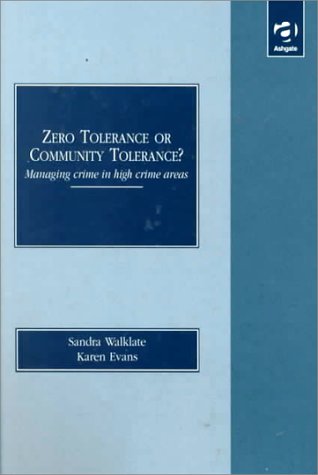Routledge Revivals
1 total work
Zero Tolerance or Community Tolerance?
by Sandra Walklate and Karen Evans
Published 28 September 1999
Derived from a longitudinal study of two high crime areas, this book challenges both academic and policy assumptions concerning what it is like to live in, go to school in and work in such areas. The study casts light on how such communities really work and what the policy and political challenges of such a community are. Its findings raise all kinds of questions about community safety, notions of partnership, and what the processes underpinning the "fear of crime" might look like. As such it should prove useful to those working in the field of criminology, social policy and social work.
